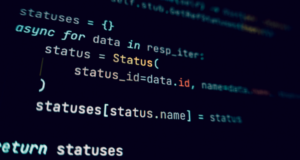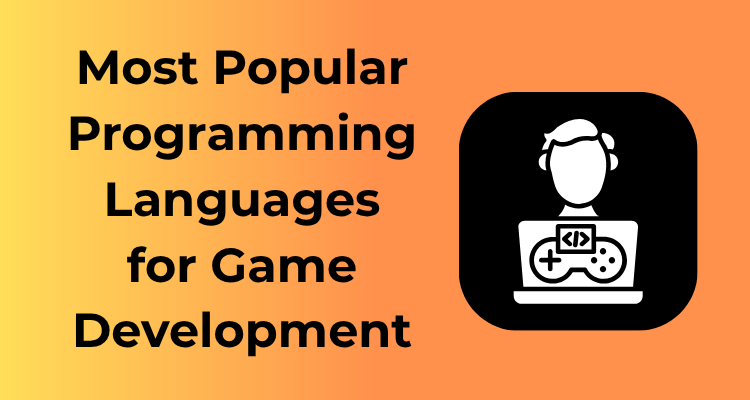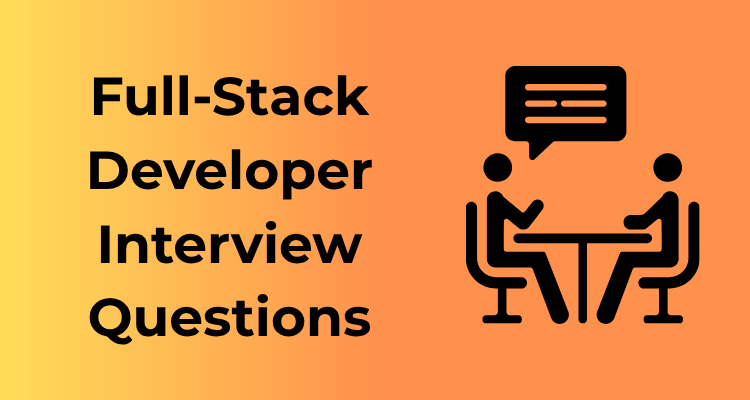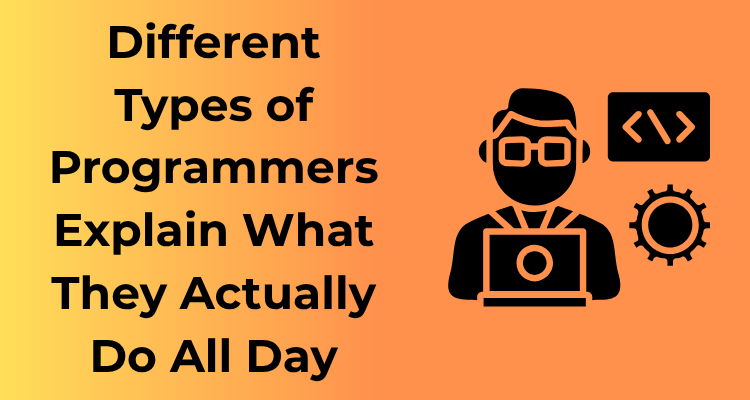Programming may seem intimidating at first, but once you master the art of breaking problems into smaller, digestible pieces, things start to feel less overwhelming. Think of it as solving a puzzle; small components come together to form the complete picture.
Why Break Problems into Pieces?
The key idea here is focus. When you work on a single large issue, it can quickly feel insurmountable. However, if you deconstruct it into smaller, actionable steps, you not only reduce stress but increase the clarity of what needs to be done.
Taking this approach helps you spot hidden complexities, identify repetitive tasks, and streamline your solution. These are skills that, once honed, make you a much more effective problem solver, whether you’re coding or tackling a real-world issue.
How to Start Breaking Down a Problem
Okay, so how do you actually do this? Here are a few simple strategies:
- Understand the Problem: Before you break anything down, be crystal clear on what the problem is. Ask yourself, “What is the goal? What does success look like?” If your understanding is foggy, no amount of breaking down will help.
- Break it into Logical Steps: Identify the individual components or sub-tasks involved. For instance, if you’re creating a program to calculate the area of different shapes, think about the steps involved for each shape — input dimensions, perform the calculation, and display the result.
- Rank by Dependencies: Figure out what needs to be done first to enable subsequent steps. Some pieces build upon the results of others, so having a plan for order is essential.
Think of it Like a Recipe
Let’s make this fun: imagine you’re baking a cake. It would be impossible to tackle “Bake a cake” as a single step. Instead, you break it down:
- Preheat the oven.
- Gather the ingredients (flour, sugar, eggs, etc.).
- Mix the wet ingredients and the dry ingredients separately.
- Combine and pour the batter into a pan.
- Bake the cake.
See how straightforward that becomes? The same principle applies to programming problems, no matter how complex.
Tools to Help You Break Things Down
There’s no shame in using tools to assist you. Here are some great resources for breaking problems into manageable steps:
- Pen and Paper: Sometimes, the old-school method of jotting things down helps put complex ideas into perspective.
- Flowcharts: Diagramming software, such as Lucidchart or even basic drawing tools, can help you visualize components and their relationships.
- Pseudocode: Write your plan in plain English or a simplified coding format. This helps you map out the logic needed without worrying about syntax.
Learning to Ask the Right Questions
As a programmer, one of the most critical skills you can cultivate is the ability to ask the right questions. It might sound straightforward at first, but in reality, learning how to frame and articulate questions effectively can make or break your ability to solve complex coding challenges and understand problems thoroughly. Let’s dive into why this skill is so important and how you can master it.
Why Are Questions So Powerful?
Questions are your gateway to discovery. When you ask the right questions, you clarify objectives, uncover hidden details, and often stumble upon solutions that were previously unclear. At its core, programming isn’t about knowing everything—it’s about knowing how to figure things out. Great questions lead to great answers, saving time and reducing frustration.
Types of Questions Programmers Should Ask
To develop better habits, it helps to categorize the types of questions to ask during programming:
- Clarifying Questions: These are essential when a problem is vague or unclear. For example, “What is the specific output we expect from this program?” or “What constraints does this solution need to meet?”
- Diagnostic Questions: Use these when debugging or trying to understand why things are behaving a certain way. Think along the lines of “Which parts of the system are affected by this change?” or “What was the last known configuration that worked?”
- Exploratory Questions: These allow you to dig deeper into a problem, encouraging creative or alternative solutions. For instance, “Are there other methods or libraries that could simplify this?”
- Reflective Questions: After completing a task or solving a question, reflect. “What could I have done to approach this more efficiently?” or “Was my solution scalable for future requirements?”

Techniques for Crafting Better Questions
Good questioning is a skill, and like any skill, it takes practice. Here are some tips to help you improve:
- Be Specific: Avoid overly broad questions like “Why is it broken?” Instead, ask something like, “Which part of the function doesn’t execute as expected?” The more precise you are, the faster you’ll find solutions.
- Focus on Goals: Before you ask a question, clarify your objective. Are you trying to debug? Learn something new? Optimize code? Tailor your question accordingly.
- Use Keywords Effectively: If you’re searching online for help, include relevant keywords, programming languages, libraries, or error messages. It increases the chances of finding relevant resources.
- Ask Open-Ended Questions: Whenever possible, aim for questions that encourage exploration or discussion, e.g., “What are the trade-offs of using X versus Y in this scenario?”
Practicing in Real Life
One way to get better is by asking questions in your day-to-day work—don’t wait for major challenges. For example, when analyzing someone else’s code, actively think about “Why did they choose this method?” or “What could they have done differently?” When participating in coding forums or at work, practice framing your questions clearly and concisely. With time, this becomes second nature!
Don’t Be Afraid to Ask
The cornerstone of growth as a programmer is curiosity. Some new programmers worry about sounding “stupid” when they ask questions, but let me assure you: there are no stupid questions in programming, only learning opportunities. Asking shows you’re invested in solving a problem and improving. Plus, the more you ask, the better you get at distinguishing helpful questions from less relevant ones.
Adopting a Problem-Solving Framework
Let’s admit it: tackling problems without a plan can feel like wandering through a maze without a map. You might get lucky and stumble upon the exit, but most of the time, you’ll feel stuck, frustrated, or worse — completely lost. That’s where adopting a problem-solving framework comes in! It’s like having a trusted guide to navigate through challenges with clarity and confidence.
Why Use a Framework?
A framework gives structure to your thinking. By following a systematic approach, you can stay organized, reduce stress, and avoid the temptation to jump to conclusions. More importantly, it’s a reusable tool you can rely on in different scenarios instead of reinventing the wheel every time a new issue arises.
Steps to a Simple Problem-Solving Framework
Here’s a tried-and-true framework to help you solve virtually any programming problem. It doesn’t rely on magic — just good, old-fashioned logic and some smart strategies!
1. Understand and Define the Problem
Start by truly understanding what the problem is. This isn’t just about skimming the surface; it’s about digging deeper:
- What is the problem asking you to solve?
- What constraints or requirements must you work within?
- Are there any unknowns you need to clarify?
Take time to explore the problem before diving into solutions. Think of it as reading the map carefully before taking the first step.
2. Break It Into Smaller Steps
Big problems can feel overwhelming, so think of them as giant pizzas — you eat them slice by slice! Break your problem into smaller, independent parts. Solve one chunk at a time and use those small wins to keep building momentum.
3. Plan Before Coding
It’s tempting to jump right into writing code, but hold on! First, outline your approach:
- What steps will you follow to solve each smaller piece?
- Do you need any specific tools, methods, or resources?
Document this plan clearly before testing it in code to save yourself future edits and headaches.
4. Execute Methodically
Now it’s time to roll up your sleeves and get coding. Stick to your plan and implement one small section at a time. Celebrate each success, no matter how tiny. Address each new obstacle calmly — it’s all part of the process.
5. Evaluate and Improve
Once you’ve completed the solution, take a moment to evaluate:
- Does your solution meet all the requirements?
- Is it efficient and clean? Could it be optimized further?
Even if it works, reflecting on areas for improvement can make you a stronger problem-solver in the long run.
Embracing Consistent Debugging Techniques
If you’ve ever written a line of code, chances are you’ve also encountered a bug. Debugging is as integral to programming as ingredients are to cooking a recipe. The best programmers don’t just debug their code; they master how they debug, and consistency is key. Let’s explore what this means and how you can embrace consistent and effective debugging techniques.

What Exactly Is Debugging?
Debugging, quite simply, is the process of identifying, analyzing, and fixing issues in your code. Think of it as solving a mystery: you have clues (error messages or unexpected behavior), and you need to deduce the cause. This detective work is not just about solving a single case—it’s about refining how you approach every case.
Why Does Consistency Matter?
Imagine trying to solve a puzzle without a strategy—pulling at random pieces and hoping they fit together. You might succeed eventually, but it’ll take much longer and cause frustration. Consistent debugging techniques offer a structured way to approach issues, avoid unnecessary trial and error, and perhaps even prevent bugs from happening at all!
Steps to Cultivate a Consistent Debugging Strategy
Here’s a proven step-by-step approach to integrate into your problem-solving routine:
- Start by understanding the error: Pay attention to error messages or logs. They often provide invaluable clues about what went wrong and where.
- Reproduce the problem: Consistency thrives in predictability. If you can make the bug happen repeatedly, you’ll have a clearer path toward resolving it.
- Narrow down the source: Divide your code into smaller parts and test them independently. Binary search-like narrowing can save you time.
- Use debugging tools wisely: Modern programming comes with amazing debugging tools—built-in browser debuggers, logging systems, or IDE debuggers. Use breakpoints, step in/out navigation, and variable watches to observe what your program is doing.
- Document your findings: Just as a detective keeps notes on cases, you should jot down what the issue was, how you fixed it, and any key lessons for the future. This habit will save you headaches down the line.
Top Techniques to Make Debugging Easier
- Befriend Logs: Logging is your new best friend. Sprinkle in
console.log()statements (or equivalent commands in your programming language) at crucial points to get a glimpse of the program’s mind at work. - Exploit Rubber Duck Debugging: Talk through your code to an inanimate object, like a rubber duck—or a willing friend. When you explain your problem aloud, insights often emerge. It may sound silly but trust me—it works!
- Always test edge cases: Bugs tend to lurk in extreme or unusual inputs. Train yourself to think about what the code might do in unconventional scenarios.
Practicing Logical Thinking With Real Scenarios
Thinking like a programmer isn’t something that just happens magically overnight—it’s a skill that’s honed with practice and dedication. One of the best ways to sharpen your logical thinking is to immerse yourself in real scenarios. Let’s chat about this step and how you can make it fun, engaging, and impactful in your journey to mastering problem-solving.
Why Real Scenarios, You Ask?
Think of it this way: learning to drive a car from a manual is vastly different from actually getting behind the wheel. Similarly, practicing logical thinking in hypothetical, abstract terms might not stick with you the way solving real-world puzzles does. Real-world scenarios anchor your thought processes to practical applications, helping you gain confidence and putting your logic to the *real test*.
Plus, nothing beats the satisfaction of solving a problem you could encounter in everyday life—it connects the dots between theory and application.
Start Small and Build On Successes
You don’t need highly technical or complicated issues to begin practicing logical reasoning. Start small with scenarios that mimic everyday programming challenges:
- Write a simple algorithm to calculate the average of grades for a class of students.
- Build a small function to decide the best offer on a shopping website with discount combinations.
- Create a simple decision-making flow that helps determine what to wear based on weather conditions.
These exercises aren’t just fun—they’re foundational. By breaking down these problems and tackling them step by step, you’ll develop the confidence needed to tackle bigger projects later.
Roleplay Real-Life Problems
Here’s a pro tip: roleplay real-life troubleshooting scenarios! Imagine you’re working on a team building a scheduling app. Picture the kinds of problems that might crop up:
- How do you handle overlapping meeting times?
- What happens when a user submits invalid data, like a meeting that starts after it ends?
- How do you prevent double-bookings?
When you explore questions like these, you naturally start thinking about *logical edge cases*. The result? You’ll train yourself to think more methodically, anticipate problems, and troubleshoot better when similar real-life coding scenarios arise.
Make Use of Online Platforms
If you’re looking for ready-to-use problems and scenarios, there are a wealth of platforms waiting to help. Some of our favorites include:
- HackerRank: Great for tackling challenges that span across industries and difficulty levels.
- CodeWars: Fun and community-driven with gamified coding challenges.
- Project Euler: Best for math-heavy and logic-based problem solvers.
You’ll not only learn logical thinking but also hone your coding skills while engaging with a community of enthusiasts just like you.
Recognizing Patterns to Automate Repetitive Tasks
Ever felt like you’re doing the same thing over and over again while programming? Maybe you’re always looping through arrays the same way, or writing chunks of similar logic in multiple parts of your program. Well, here’s the secret sauce to becoming not just a better programmer, but a smarter one: pattern recognition!
Why Patterns Matter in Programming
Recognizing patterns isn’t just for solving puzzles or winning board games — it’s a superpower when it comes to coding. Why? Because patterns allow you to write cleaner, faster, and more maintainable code. Think of it this way: every time you notice a pattern, you’re unlocking the potential to simplify your tasks, minimize errors, and save time. It’s like turning chaos into order!
Here’s an analogy: Imagine you’re folding laundry. After a while, you get used to folding a shirt a particular way, so it goes faster with every repetition. Recognizing coding patterns works the same way — once you’ve identified a repetition, you can streamline the process (and save your brain for bigger challenges).
How to Spot Patterns in Your Code
Alright, let’s get hands-on! Spotting patterns takes a mix of observation and curiosity. Here’s how you can master it:
- Track Repetitive Actions: Keep an eye out for snippets of code that you write repeatedly. Do you always loop through data the same way? Do you often validate user input following similar steps?
- Think “Bigger Picture”: Zoom out and look at the structure of your code. Are there functions that look strikingly similar, but handle slightly different tasks?
- Review and Reflect: Revisit your completed projects. Can you spot similarities in how you approached certain problems?
By continuously developing this observational skill, you’ll find you no longer just write code — you architect efficiency!
Automating Tasks with Recognized Patterns
Once you’ve identified patterns, it’s time for automation! Here’s where you can harness the power of coding to make your life easier:
- Extract Reusable Functions: Convert repetitive logic into functions or methods. This not only saves time but also makes your code much easier to read and maintain. (Bonus tip: Give your functions descriptive names!)
- Learn Design Patterns: Understand common software design patterns (Singleton, Observer, Factory, etc.). These are tried-and-true solutions to recurring coding problems. Not only will this deepen your technical know-how, but it’ll make collaboration with others easier since these patterns are often shared concepts among programmers.
- Automate via Tools: Dive into automation tools or scripts for tasks like testing, deployment, or repetitive administrative work (you could write a script to rename files across a directory or scrape data automatically).
Real-Life Example: The DRY Principle
Let’s highlight a superstar of pattern recognition: the DRY (Don’t Repeat Yourself) principle. It focuses on eliminating redundancy. Let’s say you’re calculating a user’s total bill after taxes and discounts in multiple parts of your program. Instead of repetitively writing the same formula everywhere, identify that pattern, extract it into a function, and reuse it. Boom — your program becomes crisp, streamlined, and easier to modify later!
Building Resilience Through Trial and Error
Programming can feel like riding a rollercoaster—it’s exhilarating when things work and maddening when you’re staring at a blank console or yet another error message. Believe it or not, the key to succeeding as a programmer isn’t just about writing perfect code. It’s about developing resilience through trial and error.
The Art of Being Okay With Mistakes
Let’s face it: making mistakes is inevitable. Every programmer, from a beginner writing their first “Hello, World” to seasoned software developers, makes errors. And that’s okay! Mistakes are where learning happens. The sooner you accept this, the faster you’ll grow.
When something doesn’t work as expected, think of it as a puzzle to be solved rather than a personal failure. Instead of asking, “Why does this always happen to me?” shift your mindset to, “What can I learn from this?” This small change can have a big impact.
The Power of Iterative Learning
- Write code, knowing it might not work perfectly the first time.
- Analyze the errors and unexpected results.
- Adjust and iterate on your solution.
- Repeat the process until you achieve success.
This cycle isn’t just about fixing bugs. Every iteration helps you uncover new tools, techniques, or approaches you can use in the future. Think of trial and error as your personalized programming bootcamp!
Turning Frustration Into Curiosity
It’s easy to get frustrated when your code doesn’t cooperate. But what if you approached every error as an opportunity to dig deeper? Errors often reveal what you don’t know yet, which is exciting because it means you’re about to learn something new.
Here are a few tips for turning frustration into curiosity:
- Take a deep breath—stepping away for a moment can help reset your mind.
- Break the problem into smaller pieces and tackle one at a time.
- Search online for similar issues—forums like Stack Overflow can save you hours.
- Experiment fearlessly with possible solutions. Even the “wrong” answer adds to your understanding.
Building Emotional Stamina
Programming can be an emotional journey. You’ll feel joy, frustration, confusion, pride, and maybe a little panic all in one day. Resilience isn’t just about continuing on through technical challenges—it’s also about managing your emotions along the way.
Here are a few ways to build emotional stamina:
- Celebrate small wins: Successfully fixing a tiny bug is still progress; don’t overlook it.
- Keep a growth mindset: Remind yourself that every tough challenge makes you a better programmer.
- Lean on your community: Join forums, local meetups, or programming groups. Sharing your experiences reminds you that you’re not alone.
Resilience Is Your Superpower
No one becomes an expert programmer overnight. It’s through the countless trials, errors, and missteps that we sharpen our skills and approach mastery. Remember, every error message is a stepping stone to a breakthrough.









